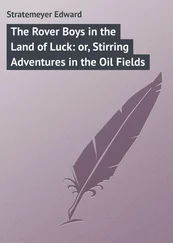Stephen Fry - The Ode Less Travelled - Unlocking The Poet Within
Здесь есть возможность читать онлайн «Stephen Fry - The Ode Less Travelled - Unlocking The Poet Within» весь текст электронной книги совершенно бесплатно (целиком полную версию без сокращений). В некоторых случаях можно слушать аудио, скачать через торрент в формате fb2 и присутствует краткое содержание. Жанр: Старинная литература, на английском языке. Описание произведения, (предисловие) а так же отзывы посетителей доступны на портале библиотеки ЛибКат.
- Название:The Ode Less Travelled: Unlocking The Poet Within
- Автор:
- Жанр:
- Год:неизвестен
- ISBN:нет данных
- Рейтинг книги:3 / 5. Голосов: 1
-
Избранное:Добавить в избранное
- Отзывы:
-
Ваша оценка:
- 60
- 1
- 2
- 3
- 4
- 5
The Ode Less Travelled: Unlocking The Poet Within: краткое содержание, описание и аннотация
Предлагаем к чтению аннотацию, описание, краткое содержание или предисловие (зависит от того, что написал сам автор книги «The Ode Less Travelled: Unlocking The Poet Within»). Если вы не нашли необходимую информацию о книге — напишите в комментариях, мы постараемся отыскать её.
The Ode Less Travelled: Unlocking The Poet Within — читать онлайн бесплатно полную книгу (весь текст) целиком
Ниже представлен текст книги, разбитый по страницам. Система сохранения места последней прочитанной страницы, позволяет с удобством читать онлайн бесплатно книгу «The Ode Less Travelled: Unlocking The Poet Within», без необходимости каждый раз заново искать на чём Вы остановились. Поставьте закладку, и сможете в любой момент перейти на страницу, на которой закончили чтение.
Интервал:
Закладка:
If you don’t like this subject, do write your own sonnet anyway. I think it would be a big mistake to leave this chapter without having tried to write at least one of each major form.
XI
Shaped Verse
Pattern poems–concrete poetry: a few words concerning Imagism–gamesome forms–rictameter, rhopalics, lipograms–silly syllabic forms–tetractys and nonet–acrostics and more
P ATTERN P OEMS
the
QUEEN
can do
almost
what
ever
she
wishes
up down
side to side
the world is hers
but
a
small
PAWN
gets
the
chance
to be a king
The idea of shaping your poem on the page to make a picture, symbol or pattern is a very old one. The best-known example in English verse is George Herbert’s ‘Easter Wings’ which, rotated ninety degrees, takes on the shape of two angels’ wings:
Lord, who createdst man in wealth and store
Though foolishly he lost the same,
Decaying more and more
Till he became
Most poore:
With Thee
O let me rise
As larks, harmoniously,
And sing this day thy victories:
Then shall the fall further the flight in me.
My tender age in sorrow did beginne;
And still with wickedness and shame
Thou didst so punish sinne,
That I became
Most thin.
With Thee
Let me combine
And feel this day thy victorie;
For, if I imp my wing on thine,
Affliction shall advance the flight in me.
Another of Herbert’s pattern poems, ‘The Altar’, reveals the shape of its title, an altar table.
When I was small I remember endlessly looking through my parents’ copy of the collected poems of e e cummings and being fascinated and appalled by the things he did with punctuation, his blithe disregard for majuscules and spaces and the general appearance of childish illiteracy his work presented. My teachers, I felt, would never allow me to get away with such liberties and yet there he was, sharing shelf-space with Robert Browning and John Keats. The collection included this poem; I found the slippage of the ‘l’ from ‘loneliness’ unbearably sad.
1(a
le
af
fa
ll
s)
one
l
iness
It is, incidentally, the only poem I know of whose title contains all the words of the poem: 1(a…(a leaf falls on loneliness) , yet of course the poem is not the words, it is the sum of the words and their layout, a truth in all poetry but one most obviously declared in this kind of patterned or shaped verse. cummings was a Cubist painter as well as a poet: ‘The symbol of all art is the Prism,’ he wrote. ‘The goal is unrealism. The method is destructive. To break up the white light of objective realism into the secret glories which it contains.’ I am not sure how one would categorise such a work as the famous ‘r-p-o-p-h-e-s-s-a-g-r’:
r-p-o-p-h-e-s-s-a-g-r
who
a)s w(e loo)k
upnowgath
PPEGORHRASS
eringint(o-
aThe):l
eA
!p:
S a
(r
rIvInG .gRrEaPsPhOs)
to
rea(be)rran(com)gi(e)ngly
, grasshopper;
Unscrambled, the words reveal ‘the grasshopper, who, as we look now upgathering into [himself], leaps, arriving to become, rearrangingly, a grasshopper’. Those may be the words, but the poem attempts to embody the movement, complexity, camouflage, wind-up and release, the whole whatness of a grasshopper’s leap. It is not meant visually to imitate the appearance of a grasshopper on the page, rather to force the reader to slow down and look and feel and think and unpick all the dynamics of a grasshopper’s launch and spring. A conventional poem can use words and all their qualities descriptively and sonorously, a painting can freeze a moment in time, a sculpture can imitate texture, density and mass, music can reproduce sound and shape, but what cummings has done is to create a mechanism whose moving parts are operated by the reader in the act of reading. A verbal sculpture, if you like, containing a potential energy which releases its kinetic force only at the moment of the reader’s engagement. Some of you may find this either a pretentious game or a stultifying dead end. I am sorry if this is so. I would agree, however, that as with much modern conceptual art the very specificity of the work’s originality allows little opportunity for development by others. cummings has had that idea, it is now ticked off in the box of high concepts and anything else in that line would look like cheap imitation. This is what separates such works from forms . The sonnet and the villanelle are certainly not played out, such poetic self-release mechanisms probably are.
I suppose ‘r-p-o-p-h-e-s-s-a-g-r’ qualifies as CONCRETE POETRY, a term that came out of a movement in São Paolo in the 1950s. Its manifesto states thatthe old formal syllogistic-discursive foundation, strongly shaken at the beginning of the century, has served again as a prop for the ruins of a compromised poetic, an anachronistic hybrid with an atomic heart and a medieval cuirass. 19
So there. Ezra Pound and the Imagists were concrete poets avant la lettre : Pound was influenced by the writings of T. E. Hulme and by Ernest Fenollosa’s pioneering work, The Chinese Written Character as a Medium for Poetry. Pound (Fenollosa’s literary executor) found himself inspired by the idea that the Chinese ideogram, rather than displaying its meaning syntagmatically (rolling it out phonetically and phonemically in sequence as this sentence does) actually contained meaning, held it in one visual unit. This tallied with Hulme’s idea of reality being process . ‘There are no nouns in the universe,’ he had declared, ‘only verbs.’ The upshot of this–and academics will forgive my blithe generalities–was to attempt poems that were kinds of ideogram. The best-known example is ‘In a Station of the Metro’ written in 1911:
The apparition
of these faces
in the crowd
:
Petals
on a wet, black
bough
.
Pound went into some detail concerning the composition of this poem in an influential article called ‘Vorticism’. He had been overwhelmingly moved by the sight of a succession of beautiful women and children on the Paris Metro, ‘and I could not find any words that seemed to me worthy, or as lovely as that sudden emotion,’ he wrote, until…that evening, as I went home along the Rue Raynouard, I was still trying, and I found, suddenly, the expression. I do not mean that I found words, but there came an equation…not in speech, but in little spotches of colour. It was just that–a ‘pattern’, or hardly a pattern, if by ‘pattern’ you mean something with a ‘repeat’ in it. But it was a word, the beginning, for me, of a language in colour…. I dare say it is meaningless unless one has drifted into a certain vein of thought. In a poem of this sort one is trying to record the precise instant when a thing outward and objective transforms itself, or darts into a thing inward and subjective.
The new poetics suggested by Pound’s thoughts on colour, image, quiddity and ideogram engendered a new kind of ‘iconographic’ poetry which culminated in his cantos, most especially The Pisan Cantos , notable for their use of hieroglyphs and ideograms and, so far as most of us are concerned, their almost total unreadability. There is huge gusto and bravado in their best moments, but much to make the reader feel foolish and unlettered.
I am not here to attempt a history lesson, nor am I qualified to do so, but I mention all of this as a background to the concepts that have propelled much modern poetry, most of these ideas being osmotically absorbed by succeeding generations of course, not acquired intellectually: but that holds true of our grasp of, for example, gravity, evolution, the subconscious mind and genetics. Our understanding of much in the world is more poetic than noetic. We let others do the work and take their half-understood ideas for a ride, all unaware of the cognitive principles that gave birth to them. That those principles and their corollaries would have shocked and perplexed us had we lived in other times is interesting but irrelevant for our purposes. You do not have to understand Faraday’s and Maxwell’s electromagnetic theories of light to operate a light switch, or even to become a professional lighting designer.
Читать дальшеИнтервал:
Закладка:
Похожие книги на «The Ode Less Travelled: Unlocking The Poet Within»
Представляем Вашему вниманию похожие книги на «The Ode Less Travelled: Unlocking The Poet Within» списком для выбора. Мы отобрали схожую по названию и смыслу литературу в надежде предоставить читателям больше вариантов отыскать новые, интересные, ещё непрочитанные произведения.
Обсуждение, отзывы о книге «The Ode Less Travelled: Unlocking The Poet Within» и просто собственные мнения читателей. Оставьте ваши комментарии, напишите, что Вы думаете о произведении, его смысле или главных героях. Укажите что конкретно понравилось, а что нет, и почему Вы так считаете.










